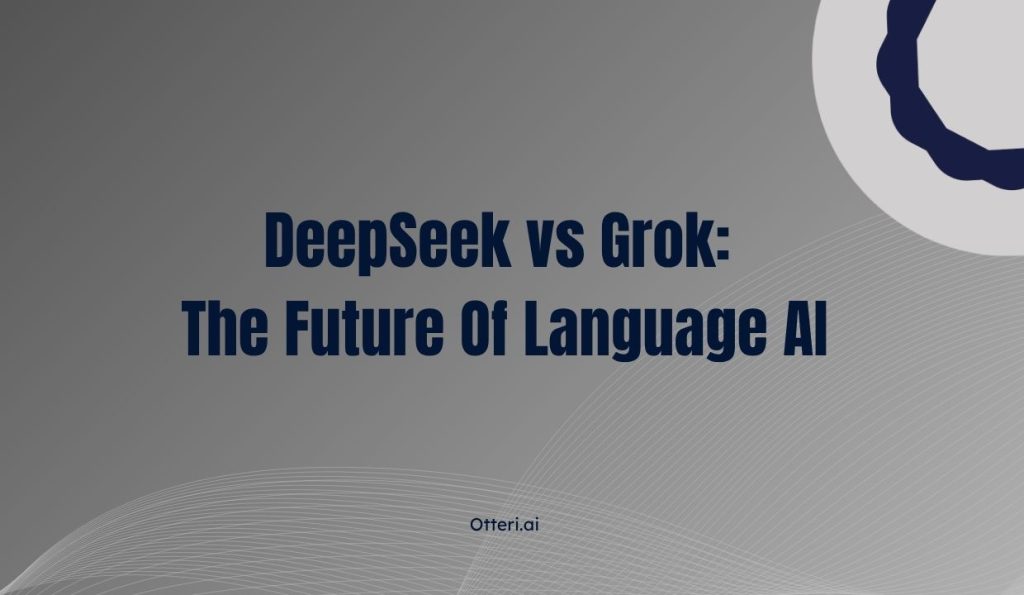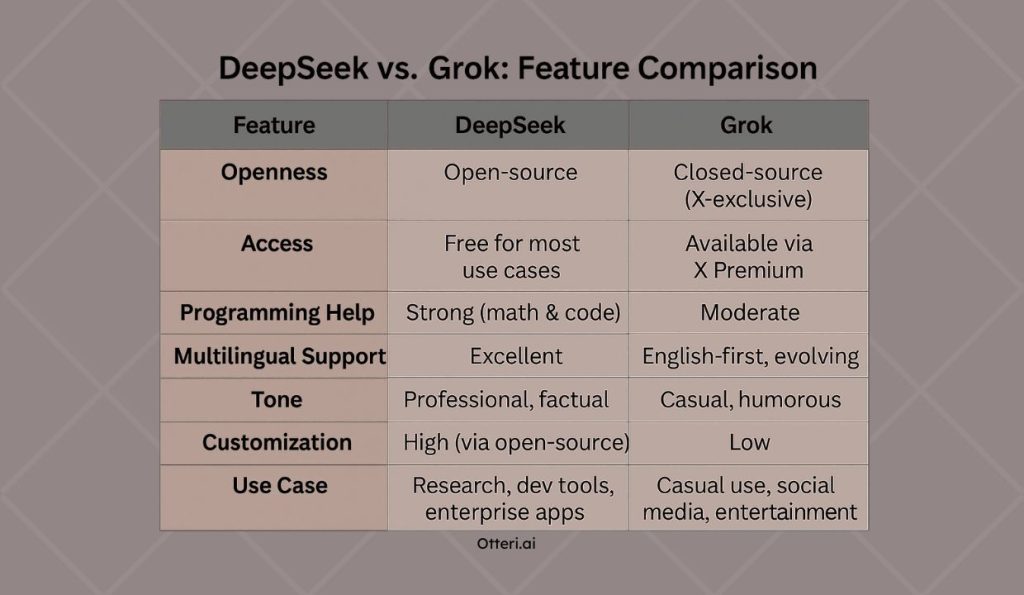
Discover the key differences between DeepSeek and Grok, two cutting-edge AI language models. Learn which one leads in performance, features, and real-world use cases in this in-depth comparison.
The Rise of AI Language Models
AI has entered a new phase where large language models (LLMs) are no longer limited to tech demos—they’re powering real-world tools, apps, and business strategies. Among the newest names generating buzz are DeepSeek and Grok. Both promise human-like reasoning, coding assistance, multi-language support, and fast response times. But how do they truly compare? Let’s dive into the core of what each offers and find out which one is best suited for your needs.
What is DeepSeek?
DeepSeek is an open-source AI model developed in China, designed with a strong focus on multilingual capabilities, programming support, and instruction following. It’s built to rival models like GPT-4 and Claude, but with an emphasis on open-source access, allowing researchers and developers to experiment more freely.
Key Highlights of DeepSeek:
Multilingual text generation and understanding
Strong performance in math and programming tasks
Open-sourced model weights (ideal for enterprise customization)
Fast inference speed and scalable API
DeepSeek is gaining attention in research communities because it supports reproducibility and academic testing without licensing barriers.
What is Grok?
Grok is the AI chatbot developed by xAI, a company led by Elon Musk, and integrated tightly with X (formerly Twitter). It’s designed to give users direct, conversational answers while also being updated in real-time using public posts from X.
Key Highlights of Grok:
Real-time access to trending data from X
Integrated directly into X Premium subscriptions
Witty, sometimes sarcastic personality
Available in multiple versions (e.g., Grok-1.5 with longer context support)
Grok is designed with a more casual and human-like tone, making it ideal for social interactions, creative brainstorming, and even responding to memes—something traditional LLMs tend to avoid.

Use Case Scenarios
When to Choose DeepSeek:
You’re a developer, researcher, or enterprise looking to build or fine-tune your model. You want transparency, multilingual capabilities, and open access to improve or repurpose the model.
When to Choose Grok:
You want an AI that understands current trends, reacts with humor, and integrates directly into social conversations on X. Ideal for creators, marketers, and everyday users who want personality with performance.
The Future Outlook: Coexistence, Not Competition
Rather than viewing DeepSeek and Grok as direct competitors, it’s more accurate to say they serve different niches in the AI ecosystem.
DeepSeek is paving the way for open innovation and global accessibility in AI.
Grok is showing how AI can be tightly integrated into social platforms, offering real-time engagement and a fun user experience.
Both models are valuable in their own right, and the real winners are users who now have more choices than ever.
Conclusion
The AI world is evolving fast, and DeepSeek and Grok represent two different but exciting visions of the future. Whether you’re a researcher, developer, or just someone exploring the capabilities of AI chatbots, understanding their differences helps you make smarter choices.
If you’re building serious tools or exploring AI ethically in research, DeepSeek might be your best bet. If you’re a social media enthusiast or want to tap into trending insights with a humorous twist, Grok delivers in style.
Are you using an AI assistant in your daily workflow? Try out both DeepSeek and Grok to see which fits your style. And stay tuned—we’ll continue tracking the evolution of LLMs and helping you navigate this fast-changing world of AI.